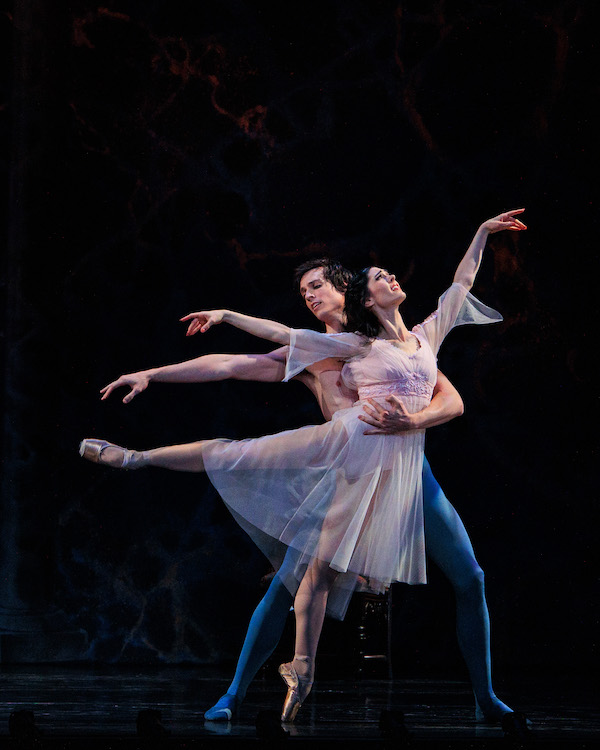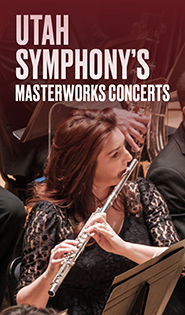Ballet West’s “Romeo and Juliet” marks a bittersweet farewell for principal artists
Ballet West’s production of Romeo and Juliet threatened to be upstaged by the show’s own backstory.
Just days before the ballet’s opening, the company announced that its popular longtime principal artists Chase O’Connell and Beckanne Sisk would be departing Ballet West at the end of this season to take up positions with the Houston Ballet. After performing with the company for over a decade, the real-life couple was aptly united in Michael Smuin’s staging of Romeo and Juliet for one of their final Salt Lake City performances.
In a 1988 interview with the Deseret News Smuin said of his Romeo and Juliet choreography that “the essence is speed.” Smuin has imbued the timeless story with a fast-paced, modern rhythm that reflects the encompassing passion he found in the original text.
With a more contemporary focus, this Romeo and Juliet’s provides its lead characters with nuanced, complex personalities. One remarkable scene finds Juliet pawing through her complicated feelings in a mirror, with Claire Wilson who is she? mimicking Juliet’s guessing gestures for ballet’s most surreal and introspective scenes. The famed death sequence capitalizes on the sweeping, modernist rhythms of Prokofiev’s music as druid-like mourners clomping around the stage in a grim procession around Juliet’s limp body.
The ballet’s unconventional expressivity reaches its peak in Act Two’s conclusion, after Tybalt’s death at the hands of a furious Romeo. Following the pair’s rousing sword fight, the mood immediately drops as Lady Capulet descends the center stage to mourn the death of her house favorite. Performed by Emily Adams, this Lady Capulet flaunts her grief in a flurry of exalted limbs, fervently heaving and falling atop Prokofiev’s militant brass fanfare. The moment conveys boldness and expresses the grandiosity of the play’s tortured emotions better than almost any other.
Further, the treatment of the lead couple presents a vision deeper than starstruck lovers. Sisk plays the young princess with a complex balance of naivete and self-awareness reminiscent–as jovial and pithy as she is measured and stoic. In her introductory scene, Sisk bounces around her bedroom with youthful glee, playing elastic games with her nurse and tumbling as much as she appears to dance. As the romance develops, the initial jitteriness of her choreography lengthens into more fluid, yearning motions. When she first meets Romeo, Sisk glides across the open stage as if drawn by an invisible force, a melting feeling of weightlessness that she achieves as she repeatedly collapses out of the air and into Romeo’s arms in the balcony scene.
O’Connell’s Romeo comes across initially as more peacock-ish, often playing up a vision of the hero as a smarmy, fraternizing playboy. He benefits most from the ballet’s stunning fight choreography (by Smuin and J. Stephen White), brandishing through percussive bouts of sword fighting with the (literally) hip-swaying swagger of a varsity athlete. But as the play’s emotional arcs turn south, so too do the fights dissolve from playfulness to frantic self-defense.
The group sword fights of Act One flurry in synchronized glee and relish the acrobatic art of fencing. This collectivity begins to fizzle in the chaos of Act Two’s street scenes, and by the concluding duel between Romeo and Paris (Jordan Veit), the rhythmic unity melts away into in-the-moment disarray as O’Connell and Veit scurry and jab at each other and skirt the line between mapped movements and actual, life-and-death battle.
One of the ballet’s most surprising cqualities arrives in its considerably diminished focus on Romeo and Juliet together. Two romantic pas de deux—the aforementioned balcony scene and Act Three’s bedroom goodbye—offer satisfactory romantic elegance, but both characters speak more in their separate scenes, Juliet in her insular mental reckonings and Romeo in his fights and duels. This relative absence of touches highlights the story’s focus on the escaping allure of love, rather than the attainment of such.
In her dying moments, Sisk grimly drags O’Connell’s body across the bare temple floor and fumbles to hold his hand into the afterlife, rejecting melodramatic romance with intentionally inelegant movements. The conclusion instead fosters our pity for the ill-fated lovers and an overwhelming sense of regret.
In the face of one of the biggest, boldest and arguably most famous love stories of all time, Smuin’s adaptation reflects its choreographer’s desire for a more contemporarily digestible adaptation, full of expressive passion, a humor-focused electricity and a creeping sense of existential dread.
Staged in spare sets with little-to-no technical trickery (the original 1979 production was on shoestring budget), this Romeo and Juliet retains a groundedness that feels relatable and honest, if a bit bleak. That this is also one of Salt Lake residents’ final chances to see two of the most important figures in Utah ballet over the last decade, and in such quintessential romantic roles, makes the viewing all the more notable.
Romeo and Juliet continues through February 19, with a final performance in Park City on February 26. balletwest.org.



